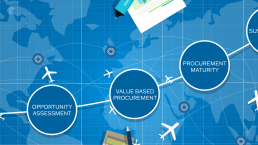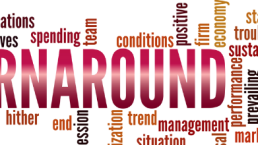Why renewable energy is fuelling investor interest
As an asset class, renewable energy has matured dramatically over the past two decades. It has gone from being seen as an alternative culture to having huge investment potential. At the same time, traditional investment norms are changing and not just because of the evolving sustainability mega-trend. In recent years, investment managers have increased their allocations to the broader real assets sector with growing numbers classifying infrastructure and real estate as “real assets”.
Solar power does not pollute the air with greenhouse gases and is noise-free to be used for residential purposes. Solar opportunities are available at various scales, i.e. for households and large business ventures providing power to the grid. Solar panels are the fastest-growing renewable energy option, thanks to falling costs and increasing investment. Their easy installation and “low emissions” are environmentally friendly.
Wind turbine power will be an increasingly compelling longer-term investment due to increasing urbanisation and population growth, leading to higher electricity demand. Technological progress with relative cost advantages for renewable energies and an improved regulatory environment (social and political support) motivates businesses to manufacture wind turbines.
Get in touch with Andrew to discuss
CONTACT US TO FIND OUT HOW WE CAN HELP
Sign up to our insights
The Future of Work in Financial Services
The last 15 months had seismic impacts on workforces and ways of working
Banks and insurers weren’t prepared for the pandemic – within days nearly every employee was working from home, all of the time. The initial response was crisis-mode transferral of existing activities, processes and tools to remote – with minimal adaptation.
Most organisations surprised themselves at how quickly this was achieved and asked why they couldn’t make change happen as fast outside of a crisis.
Rises in workforce productivity were reported (less evidenced), but this was partly driven by fear of job loss.
Homeworking conditions varied enormously, with many people dealing with cramped, noisy environments, unreliable internet connectivity, and competing childcare and work demands
Protracted home-working suited some but caused a widespread decline in mental and physical wellbeing for others*, particularly in larger households:
- 46% taking less exercise and 39% developing musculoskeletal problems
- 59% finding it harder to switch off from work and 37% reporting disturbed sleep
- 67% feeling less connected to or isolated from colleagues
- 41% of those living in households with 3+ people think working from home is worse for their health and wellbeing, vs 29% of those living on their own and 24% of those living with just their partner
Business leaders had to respond to a wave of 'here & now' imperatives
How to:
- Immediately ensure operational resilience and prioritise access for those who most needed service
- Adapt and mobilise rapidly to deliver Government-backed support scheme (BBLS, CBILS)
- Avoid customer resentment or loss as a consequence of exceptional service constraints – e.g. motor and health insurers compensating policyholders for reduced need to claim or ability to fulfil claims
- Best minimised disruption and restore service quality for all partners and customers
- Accelerate process and service digitisation to enable all this, e.g. increased chatbot use to manage contact demand
- Provision to manage significant financial risk, e.g. bad loans for banks and increased claims volumes for Life insurers
- Minimise furlough and redundancies and keep colleague morale and motivation high
- Ensure a safe, confident return to the workplace during those periods when permitted/required to
Expansive, strategic initiatives – like progress on sustainability, operating model and core technology change – were largely relegated down the agenda
Today’s focus is on transitioning to new ways of working which will best advantage organisations and colleagues after restrictions end
- The Government requirement to work from home whenever possible lifts on July 19th
- Though uncertainty continues with some senior scientific advisers urging continued working from home over the summer
- Return to the workplace is underway within Financial Services albeit under varying conditions, speeds and guidance
- Lots has been done on scenarios and plans for what the new ways of working will look like, and how they will be better…
But how ready are banks and insurers to execute their plans and take full advantage of the many opportunities the transition offers?
Visions of the Future of Work vary, and the best solution to many implementation complexities is not yet known
Simplistically, strategies divide between three broad options
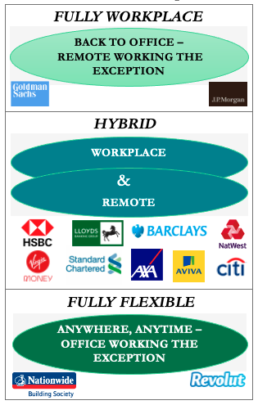
But one size won’t fit all
There are multiple work ‘personae’ with different required and desired ways of working:
- e.g. in the wealth management division of a bank, traders may be encouraged back to the office full time…
- where, Ops and Technology colleagues shift to a 1:3:1 week [1 day in the office, 3 at home, 1 flexible]
- while private banking account managers go to fully flexible
Many questions still need working through before the optimised hybrid model is found such as:
- What will the office be used for on return – which tasks and activities need to be conducted there and what changes in office design/functionality will best support those?
- What and how should policies flex to deal with exceptions, e.g. for people with lower comfort levels about returning to office-based or more cautious views of ongoing Covid risks?
- Where and how should front/middle/back-office processes and controls differ between the office and home?
- Where and why should this prompt a reshuffle of roles, interfaces, activities to maximise performance?
- Do certain roles no longer need to be attached to a site/location? E.g. could a UK job be done 100% from home in France?
- How to ensure similarity between home and office experience where it matters to avoid some colleagues feeling disconnected, and to bolster inclusivity?
- To what extent will savings from reduced office space outweigh costs of standardising/upgrading home working equipment, furniture, and technology?
The challenge is now to successfully translate the vision into the new operating and cultural reality… and deliver maximum benefit from it
The Future of Work challenge facing organisations now is how to actually ‘make it happen’
Moving to action is the hard part, and in our view, the effort needs two strongly coordinated legs:
- Piloting the practical changes needed to establish and embed target new ways of working – testing/learning and refining at pace to best effect across the entire business, attuned to the needs of different work personae
- Designing and delivering deeper change that goes beyond just re-configuring office space – to create maximum value by converting the breadth and depth of opportunities opened up by the FoW, so…
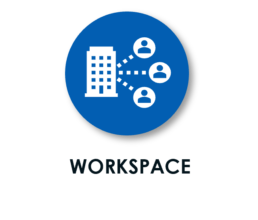
- Optimise and flex office access and space in synch with hybrid working needs
- Perfect the work-at-home equipped-ness and experience
- Convert cost-savings from real estate footprint and usage reduction
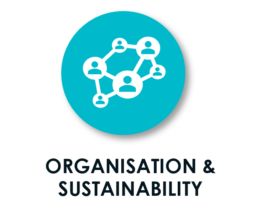
- Organise across functions and silos for hybrid working effectiveness
- Link WoW changes to delivery of CN0 & cost optimisation goals
- Raise employee engagement as a purpose-based organisation
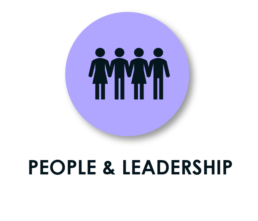
- Improve management, coaching, motivational techniques and controls to bridge in/out office split
- Skills & behaviours ‘upgrade’ for higher performance and positive culture change
- Enrich diversity and recruit the best talent from a wider geography
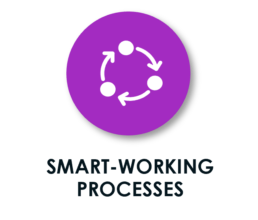
- Re-think routine activities for maximum efficiency
- Introduce smarter working processes to boost productivity
- Drive those pandemic customer behaviours (like increased digital payments) which boost productivity and enhance CX
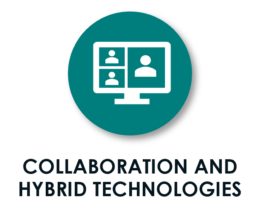
- Adopt best collaboration tools and AI/automation technology to improve work quality, pace, output
- Clear out under-utilised or no longer fit for purpose office collaboration / workflow tools
In delivering holistic change there is a golden opportunity to redefine the employee value proposition and enhance culture
Holistic change approach to the Future of Work
Designing to most compelling EVP for the future
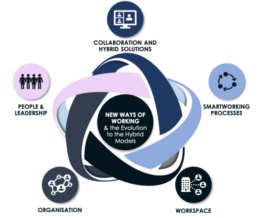
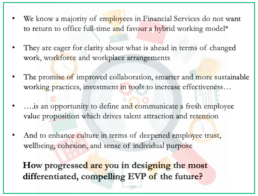
The human and commercial benefits of getting this right are BIG
Banking and insurance have amongst the highest remote working potential of any sector, with around three-quarters of time spent on activities that can be conducted remotely, without the loss of productivity*
Indicate scale benefits of transitioning to 50% remote working are £10M annual savings per 1,000 employees

There are important human capital and reputational /social responsibility benefits to derive from improved employee experience and accelerated reduction in the organisation’s carbon footprint***
* Source McKinsey / What’s Next for Remote Working
** Source Global Workplace Analytics, Amazon, SHRM, Deloitte – average annual savings include the cost of office rent, electricity, water, insurance supplies. Savings based on full-time employees with compatible jobs telecommuting 20 hrs/wk. Assumes 2,000 hour work year and £70/hr labour rate
*** Source Carbon Trust / Homeworking
So… the questions we think you need to be able to answer are…
Strategy
Does your FoW vision and ambition reach far enough?
Is your FoW strategy holistic and clear on what benefits the new ways of working should deliver, in terms of
- human capital
- culture change
- productivity
- operational efficiency
- customer experience
- cost optimisation
- carbon reduction
How robust is the supporting business case and rationale?
Change Design
Do change designs have the necessary sensitivity and granularity at policy, process, controls and performance management levels? Do they have
- defined rules and variability on when in-person presence is required by specific roles, activity mixes and situations
- mitigations of risk of accentuating inequalities and creating new psychological or emotional stresses amongst employees
Test – Learn – Optimise
What will it take to pilot, refine and embed the transition effort successfully and at pace?
Enablement
What needs to be achieved to ensure the organisation and people are ready to adopt the new ways of working?
Have you identified/selected the optimal system, technology and data solutions to enable the hybrid working model?
Benefit Capture
To what degree can you be confident you have the right implementation plans, measures and capabilities to realise the target model and benefits?
We would welcome a discussion to understand where you are in moving from visioning to delivering FoW and which questions matter most to you, and to explore where Curzon’s capabilities may be relevant to your needs
CONTACT US TO FIND OUT HOW WE CAN HELP
Future of Work insights
Sign up to our insights
Procurement Value Assessment
Redefining the procurement supply chain
Where does procurement feature in your organisation’s value chain? Traditional priorities focus on sustainable savings, but by maximising the value of your supply chain through strategic end-to-end management you can successfully expand the function into a profit creator and market differentiator.
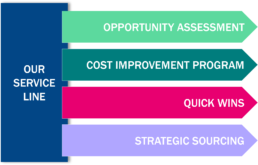
- Opportunity assessment: quantitative analysis, price benchmarking, contract analysis & baselining
- Stakeholder engagement & business requirements/specifications
- Market analysis & supplier capability assessment
- Sourcing strategy & sourcing plans
- Program set-up, governance, PMO & change management
- Value-based supplier selection. Price vs Value (quality, service, innovation, sustainability, etc.)
- Quick wins (short term results), tendering, market reviews, e-sourcing
- Suppliers negotiations
- Demand management, Buy vs. make (outsourcing), the total cost of ownership approach
- Process improvement
Redefining the procurement supply chain
Pre-sourcing
Our added value lies in ensuring Business Stakeholders support a successful implementation
Through:
- Stakeholder’s pro-active engagement
- Requirements and specifications definition, stakeholders’ feedback and recommendations
- Change management process designed through our sourcing initiatives
- Challenge needs vs. wants
Post-sourcing
We take our customers through the full procurement journey, from stakeholders’ engagement to implementation to ensure benefits remain sustainable
Through:
- Sourcing Communication,
- Sourcing Implementation monitoring
- Compliance (Price, Supplier) & Maverick Buying
- Savings Tracking & Reporting
- Supplier performance Tracking
- Procurement Team and Business stakeholders’ capability building
- Business Stakeholder “education”
If your need help turning your procurement function into a profit creator and market differentiator, get in touch.
our value proposition
curzon in action
Sign up to our insights
Contact our Procurement service line lead,Stephane Boroncelli, to find out more
Abhishek Roy

Consultant
44 (0)7459 047 273
Abhishek is a Specialist Physician turned Management Consultant, with over 7 years of work experience in the public healthcare sector in India. He has successfully led large teams across geographies amidst highly complex and challenging environments of COVID and paediatric epidemic crises.
He holds a Bachelor of Medicine and Surgery (MBBS) and a Doctor of Medicine (MD) in Clinical Biochemistry from prestigious medical schools in India. He also holds an MBA from Saïd Business School, University of Oxford, with concentrations in Strategy, Technology, and Entrepreneurship.
In addition to his medical work, he has also juggled being an Entrepreneur and Strategy Consultant to health-tech start-ups in an accelerator programme. Combining his previous experience in healthcare and his business acumen, his vision is to help solve the most complex problems plaguing the healthcare industry across the world.
CONTACT US TO FIND OUT HOW WE CAN HELP
Procurement Maturity Assessment
Ensuring Procurement generates value to the business
Measuring cost savings as the only means of assessing the effectiveness of your procurement function can only have a finite impact and whilst achieving cost savings remains an imperative mission of Procurement, assessing the maturity of the function ensures it also delivers value to the business, above and beyond price.
Create value with procurement by truly assessing its position within the organisation. Ask yourself…
- Is it seen as an integral division within the organisation?
- What has the procurement function delivered beyond cost savings?
- How has procurement helped the company achieve its sustainability targets or improved the customer experience?
- Is procurement a driver or a barrier to innovation?
- Do you have the right people/capabilities to deliver maximum value?
About the author

Impactful assessment
Through the evaluation of Procurement, assessing the teams status quo, applying industry benchmarks, and aligning the function against best practice, will ensure any value delivered above and beyond cost savings benefits remain sustainable.
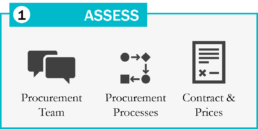
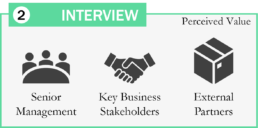
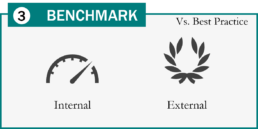
- Procurement assessment piloted against 8 dimensions, from organisational set-up to procurement processes
- Comparative analysis to industry benchmark and best practice
- Quantitative analysis performed on all external expenditure
- Qualitative assessment of the procurement function, through key stakeholders interview and staff assessment
- Spend transparency, including spend categorisation
- Procurement Maturity assessment & price benchmarking
Curzon’s assessment methodology
Our assessment methodology measures the function across all aspects of procurement providing insights in key strategic areas.
(click image to expand)
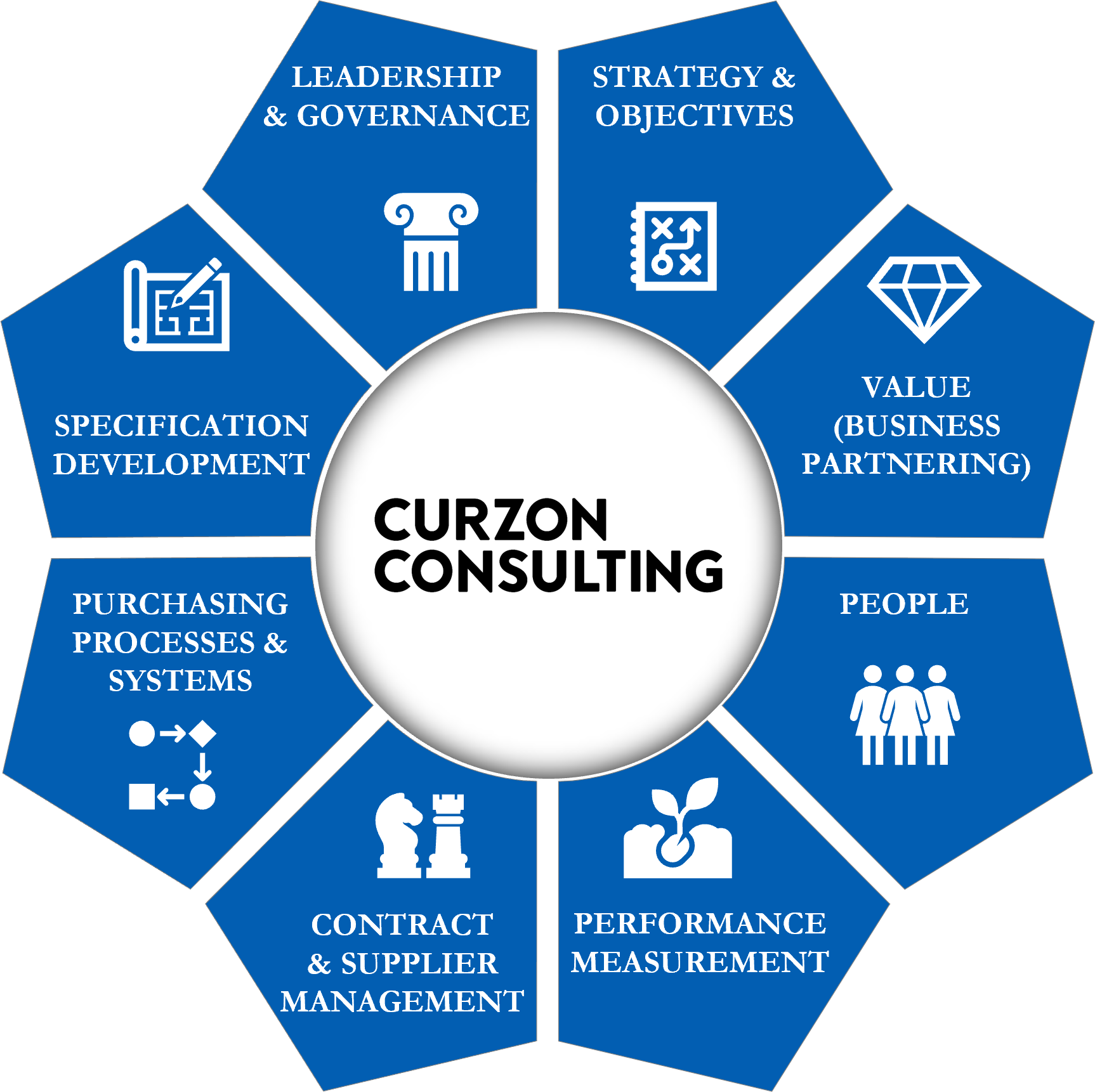
- Does the organisation manage its suppliers and contracts effectively? Are we an attractive account?
- How does the supply base perform? What competitive advantage do they bring to the company?
- How do suppliers and the organisation work together to bring additional value and improvement?
- Do we have efficient processes, systems & tools to support advanced procurement activity?
- How does the organisation use advanced analytics to generate fact based approach?
- Can the organisation demonstrate a prudent and well-planned approach to defining its supply needs?
- What role does procurement play in defining requirements, in influencing needs and challenging status quo?
- How does Procurement compare to similar organisations?
- What are the Top Management expectations towards Procurement
- Is there clear direction from Top Management?
- Do we have the right policies and support in place to enable Procurement?
- What level of maturity does the Procurement Organisation offer?
- Do we have the right Procurement / Category strategy in place?
- What is the perceived value of Procurement within the business?
- Is there a disconnect between Procurement and the business? Why?
- Is procurement a blocker/enabler to our sustainability, innovation strategy?
- What has procurement delivered above and beyond savings?
- Is the organizational structure adapted to Procurement needs?
- Is Procurement’s size adequate?
- Does the organisation have people with sufficient capability to ensure effective performance?
- What are the gaps and training needs? How to increase capability and optimise category strategy
- Does the organisation have a sound approach to assessing and demonstrating its performance?
- What has the procurement function delivered over the last few years?
- What are they expected to deliver in the future?
We believe Procurement should not be a barrier to improved sales, sustainability, or innovation, it should enable these.
With extensive experience in supplier value creation, supply market reviews, seller negotiations and a great track record of delivering cost savings for our clients, I have no doubt we can help you deliver substantial benefits to your organisation.
our value proposition
curzon in action
Sign up to our insights
Contact our Procurement service line lead,Stephane Boroncelli, to find out more
Procurement & Sustainability
Driving your sustainability strategy through procurement
Sustainability and carbon emissions have become a business imperative. If the UK is to meet its long-term net-zero commitment it must adhere to the toughest of targets and reduce national emissions by 78% by 2035.
Setting the scene
The transition to net-zero is a difficult and disruptive undertaking, and, rightfully so, is driving considerable societal concerns.
About the author

36B
2019 Global Greenhouse gas emissions
454m
UK greenhouse gas emissions (t)
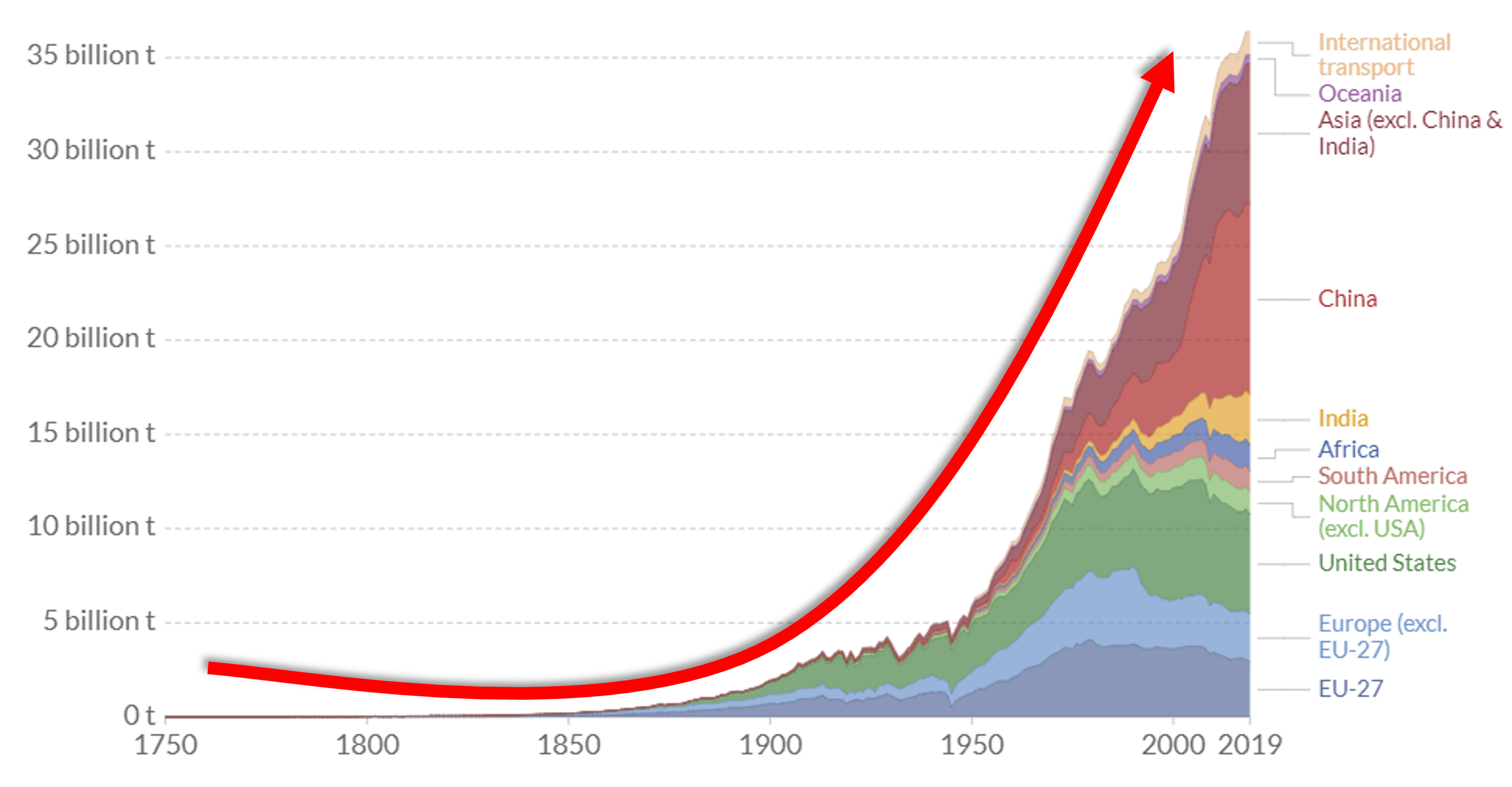
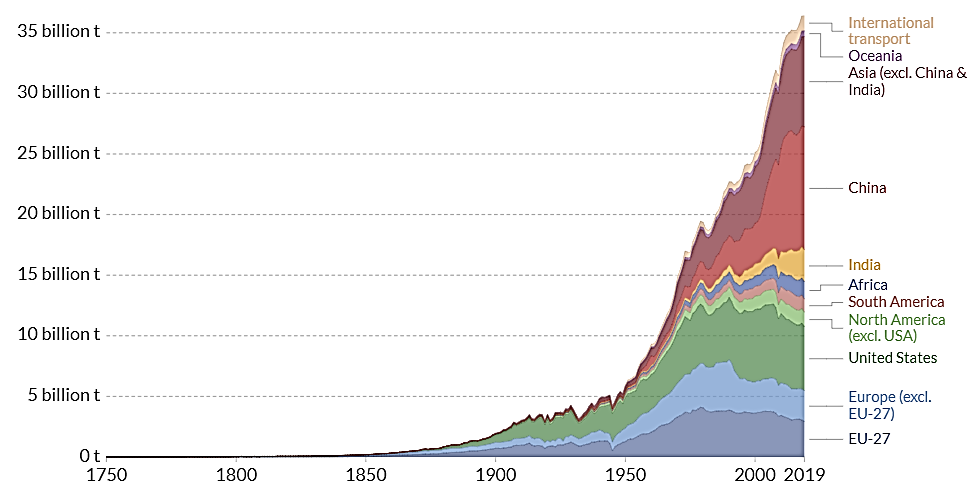
44%
x vs. 2019
With over 20% of the world’s largest corporates already setting net-zero targets, there are substantial expectations for all businesses to play their part and contribute to carbon emission reductions.
17% – 30%
UK business contribution (UK emissions)
Up to 80%
Supply Chain contribution vs. own operations
Supply Chain Consulting Services
We have defined a methodology enabling clients to assess their Supply Chain carbon emissions… and act on it!
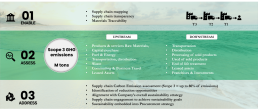
The need to change and deliver these low-carbon objectives goes beyond just the legal obligations, the positive impact on a company’s reputation and the commercial benefits of addressing sustainability are far reaching.
UKs Legal commitment
- Net-zero on all Green House Gas emissions by 2050
- Reduce absolute carbon emissions by 78% by 2035
- Reduce water consumption by 50%,
- Reduce the weight of waste generated by 30%
- Recycle 75% of waste generated by weight by 2020/21
Social Impact
- The adoption and engagement of your sustainability agenda can positively impact brand equity and increase customer loyalty, supporting growth.
- Use your cultural narrative to attract and retain talent
Commercial Benefits
- Developing sustainable procurement practises allows your organisation to future proof against supply shortages and changes in social, economic and environmental factors.
- Meeting and exceeding market demand
- Gaining a competitive advantage
Creating an effective supply chain
We believe sustainability should not be limited to your own operations… your whole supply chain should adapt to your company’s sustainability strategy.

- Own Carbon emissions
- Green Energy
- Water & waste reduction
- Recycling, Zero waste
- Plastic use
- Packaging materials end of product life (recycle, close loop), circular economy
- Transportation means, frequency distance
- Pollution, Water, Energy consumption, Waste
- Type of materials,, chemicals used, amount of waste, production process, carbon footprint
With the support of procurement, organisations can truly influence the overarching sustainability ambitions.
Current Situation Assessment
Establishing your sustainability status quo in critical in calculating what’s required to meet your targets
- Evaluate the carbon footprint of your organisation
- Consider your supply chain sustainability strategy and carbon footprint related to your company’s business
- Assess your company’s sustainability strategy vs. procurement contribution
Sustainability Dashboard

Sustainability commitments require robust governance, transparency, and reporting metrics
- Define sustainability KPI’s against your company’s sustainability strategy & targets
- Develop a detailed dashboard
- Outline and implement monitoring process
- Describe corrective actions as necessary
Sustainability Strategy

Procurement has a major role to play to address sustainability – the procurement of goods and services makes a significant contribution environmentally, socially or economically
- Work with your supply base to define sustainability targets and carbon footprint reduction in line with your company’s objectives
- Monitor and track performance
Drive sustainability
We enable procurement to pro-actively drive sustainability, working with your supply chain to ensure they synchronise to support your company ambitions
ORGANISATION
Is your procurement org enabled to drive the sustainability topic

- ORGANISATION
- PEOPLE
- POLICIES & GOVERNANCE
- SYSTEMS
- PROCESSES
PROCESSES
How is sustainability embedded into your procurement organisation?

- CATEGORY STRATEGY
- SOURCING STRATEGY
- SOURCING REQUIREMENTS
- SLA’S/KPI’S
- SUPPLIER CAPABILITY
- DEMAND MANAGEMENT
SUPPLY CHAIN
Does your supply chain support your sustainability strategy?
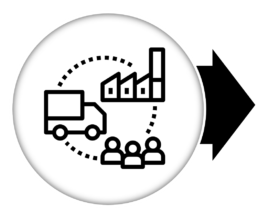
- CARBON EMISSION ASSESSMENT
- SUSTAINABILITY STRATEGY
- TRACEABILITY
- TRANSPARENCY
- QUESTIONNAIRES & AUDITS
- STRATEGY
- CORRECTIVE ACTIONS
MONITORING
How are you tracking against your sustainability targets ?
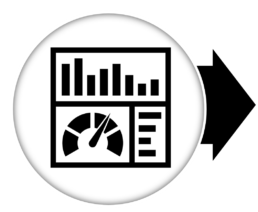
- SUSTAINABILITY KPI’S
- DETAILED DASHBOARDS
- TRACKING & MONITORING
- SMT REPORTING
- COMPLIANCE TO STANDARDS
- LEGAL COMPLIANCE
- ACTION PLAN
















